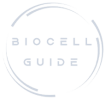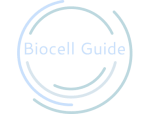What is Collagen?
Collagen is the body’s most prevalent protein and is the primary component of connective tissues like tendons, ligaments, skin, and muscles (1). Collagen has several critical roles, including supplying structure to the skin and strengthening bones(2). Collagen helps your body perform a wide range of functions, from repairing skin to strengthening hair, teeth, nails, bones, cartilage and joints.
Types of Collagen
Collagen comes in 28 various types, with type I collagen accounting for 90 percent of all collagen in the human body ( 2 ). The bulk of collagen is made up of the amino acids glycine, proline, and hydroxyproline. These amino acids combine to form three strands that form the unique triple-helix structure of collagen ( 3 , 4 ). Collagen is a type of protein. In fact, it’s the most abundant structural protein in animals. A structural protein is one that makes up the structure or framework of your cells and tissues (5).
The 4 most prevalent types of collagen are:
Type I is the most prevalent type and is present in all connective tissue that is flexible, strong, and resistant to force, tension, and stretch. Type I collagen is present in all connective tissue, including scar tissue, tendons, ligaments, bone, cornea, skin, and dentin (1).
Type ll: found in joints, intervertebral discs and cartilage which provide resistance to pressure (1).
Type lll: the primary component of reticular fibers, which are present in the skin and blood vessels which provides a flexible meshwork for cellular support and is the primary constituent of reticular fibers, which are commonly found in organs such as skin and blood vessels. Also abundant during the initial stages of wound healing (1).
Type lV is a component of the kidneys, inner ear, and lens of the eye which is composed of a meshwork that provides support and attachment to the extracellular matrix beneath (1).
The 28 Types of Collagen :
All 28 Types of Collagen
Type I : Collagen type 1 reduces the appearance of fine lines and wrinkles while also increasing skin elasticity and hydration. It is good for boosting the strength of your nails and stimulating the growth of thicker and stronger hair, in addition to aiding in the healing of your muscles, eyes, bones, and spine.
Type II : Type II collagen is responsible for the majority of the protein molecules in cartilage, the connective tissue that surrounds and protects your bones at the joints, in your spinal disks, and in your eyes, ingesting it is an excellent method for promoting healthy joints.
Type II (native) collagen is a protein found in skin, teeth, nails, hair, cartilage, bone, and other connective tissues in animals and humans. Type II collagen also makes up 50% of all protein in cartilage and 85–90% of collagen of articular cartilage (https://en.wikipedia.org/wiki/Type_II_collagen).
Collagen type II is a fibrillar protein composed of three long chains of amino acids that create a dense network of fibrils and fibers. It is the primary constituent of cartilage throughout the body. It is composed of dry mass and collagens. Type II collagen imparts tensile strength and flexibility to cartilage, allowing it to support the joints. Using fibronectin and other collagens, it aids in the process of adhesion.
Type III : Type III collagen supplies and enhances the structure of organs, blood vessels, and muscles. This kind of collagen, composed of reticular fibers, is the second most common after type I. Collagen Type III is prevalent in the intestines, uterus, muscles, and blood vessels of the human body. Additionally, it is found in blood vessels.
Type IV : This uncommon kind of collagen supports the kidneys and other organs in filtration. Type IV collagen occurs naturally as structural components in various skin layers. These skin layers frequently include our muscles, organs, and fat cells.
Type V : Type V collagen is a fibrous collagen present in some skin layers, hair, and most notably placental tissue. Type V collagen may be found in collagen fibrils, which are long, extremely thin collagen fibers, similar to other forms of collagen. (19) Additionally, type V collagen is present in the cornea of the eye. Type V deficiency has been linked to reduced corneal transparency, which may affect vision and overall eye health. (20)
Type VI : Type VI collagen is the predominant component of microfibrils in elastic fibers and in a range of other tissues, such as cartilage, skin, blood vessels (intima), cornea, placenta, uterus, ciliary body, and eye.
Type VI collagen is a unique beaded filament collagen. It generates a distinct microfibrillar network at the interface between the basement membrane and interstitial matrix. Type VI collagen has a large number of binding partners.
Type VII : Collagen type VII, which is essential, strengthens and stabilizes the skin. Type VII collagen is produced primarily by keratinocytes and fibroblasts (COLVII). It is necessary for the integrity and function of the extracellular matrix (ECM) because it is an anchoring fibril collagen that binds type I and type III collagen, therefore securing the ECM structures of the interstitial membrane and basement membrane.
Type VIII : Type VIII collagen is a nonfibrillar, short-chain collagen that makes up the majority of Descemet’s membrane. Endothelial cells synthesize type VIII collagen, which produces distinctive hexagonal lattice structures. It is present in the heart, brain, liver, lungs, and muscles, as well as in cartilage surrounding chondrocytes.
Type IX : Type IX collagen is fibril-associated collagen with interrupted triple helices. Collagen type IX is present in the chondrocytes of growth-plate cartilage, mature articular cartilage, and intervertebral discs. Type IX collagen represents up to 25% of the collagen in the heterotypic vitreous fibrils.
Type X : Type X collagen is a short chain, non-fibril-forming collagen synthesized primarily by hypertrophic chondrocytes in the growth plate of fetal cartilage. Type X collagen is a network-forming collagen. Type X collagen is mainly expressed in hypertrophic chondrocytes in cartilage, with expression usually limited to the hypertrophic zone of the growth plate and in the calcified zone of articular cartilage of long bones, where type X collagen seems to facilitate calcification.
Type XI : Collagen type XI is a fibrillary collagen which is widely distributed in articular cartilage, testis, trachea, tendons, trabecular bone, skeletal muscle, placenta, lung, and brain neoepithelium. Type XI collagen regulates fibrillogenesis by regulating the spacing and diameter of type II collagen fibrils, and functions as a nucleator for the fibrillogenesis of collagen types I and II.
Type XII : Collagen type XII is a fibril-associated kind of collagen that has triple helices that are interrupted. Human skeletal muscle contains type XII collagen. Skeletal muscle contains collagen of type XII. Type XII collagen contains glycosaminoglycan chains, and it interacts with matrix proteins such as decorin, cartilage oligomeric matrix protein, fibromodulin, and tenascin, which are all involved in the formation of cartilage.
Type XIII : The first collagen discovered as a transmembrane collagen was type XIII collagen. It can be found in cell plasma membranes.
Type XIII collagen is a type II transmembrane collagen that is nonfibrillar. It binds to a variety of proteins, including fibronectin, perlecan, nidogen-2, vitronectin, type IV collagen, and integrin 11.
Type XIV : Type XIV collagen colocalizes with type I collagen in the skin, tendon, lung, liver, placenta, and vessel walls, as well as to a lesser amount in the skin. Type XIV collagen is frequently found in locations of heavy mechanical stress, indicating that it may play a function in mechanical tissue repair and maintenance. It has been demonstrated that it is required for extracellular matrix formation and tissue function.
Type XV : Type XV collagen may also serve as a biological spring, stabilizing and enhancing resistance to compression or expansion pressures. Collagen type XV is mostly found in the basement membrane zones of microvessels, cardiac, and skeletal myocytes. The majority of type XV collagen is made by fibroblasts, muscle cells, and endothelial cells.
Type XVI :
Type XVII :
Type XVIII :
Type XIX :
Type XX :
Type XXI :
Type XXII :
Type XXIII :
Type XXIV :
Type XXV :
Type XXVI :
Type XXVII :
Type XXVIII :
Work Cited :
Nezwek, T A. “Physiology, Connective Tissue”. https://www.ncbi.nlm.nih.gov/books/NBK542226/



